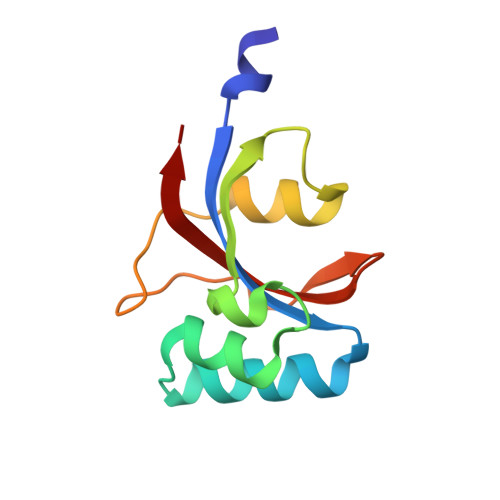Crystallographic proof for an extended hydrogen-bonding network in small prolyl isomerases.
Mueller, J.W., Link, N.M., Matena, A., Hoppstock, L., Ruppel, A., Bayer, P., Blankenfeldt, W.(2011) J Am Chem Soc 133: 20096-20099
- PubMed: 22081960
- DOI: https://doi.org/10.1021/ja2086195
- Primary Citation of Related Structures:
3UI4, 3UI5 - PubMed Abstract:
Parvulins compose a family of small peptidyl-prolyl isomerases (PPIases) involved in protein folding and protein quality control. A number of amino acids in the catalytic cavity are highly conserved, but their precise role within the catalytic mechanism is unknown. The 0.8 Å crystal structure of the prolyl isomerase domain of parvulin Par14 shows the electron density of hydrogen atoms between the D74, H42, H123, and T118 side chains. This threonine residue has previously not been associated with catalysis, but a corresponding T152A mutant of Pin1 shows a dramatic reduction of catalytic activity without compromising protein stability. The observed catalytic tetrad is strikingly conserved in Pin1- and parvulin-type proteins and hence constitutes a common feature of small peptidyl prolyl isomerases.
Organizational Affiliation:
Institute for Structural and Medicinal Biochemistry, Center for Medical Biotechnology (ZMB), University of Duisburg-Essen, 45117 Essen, Germany.
















